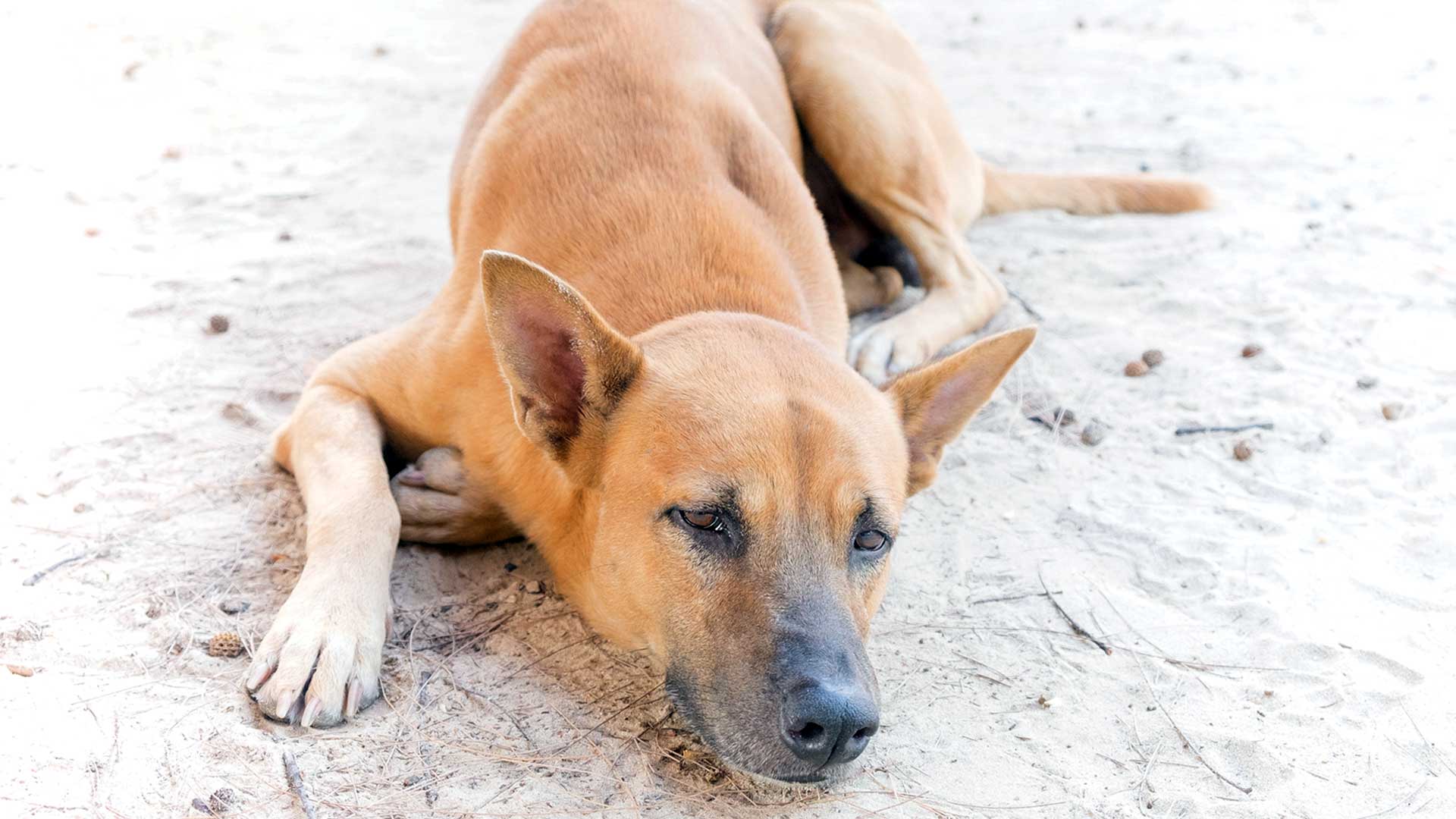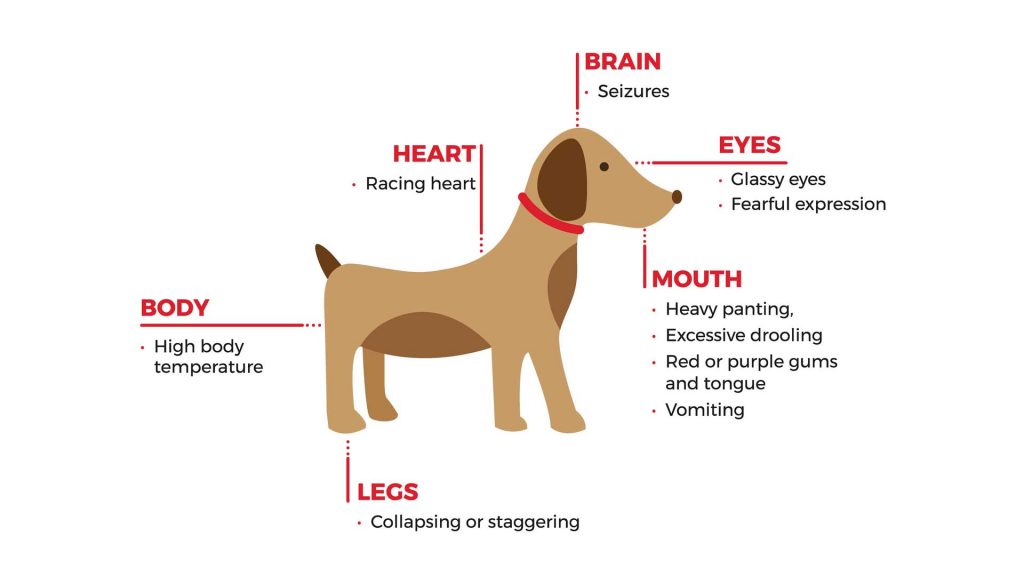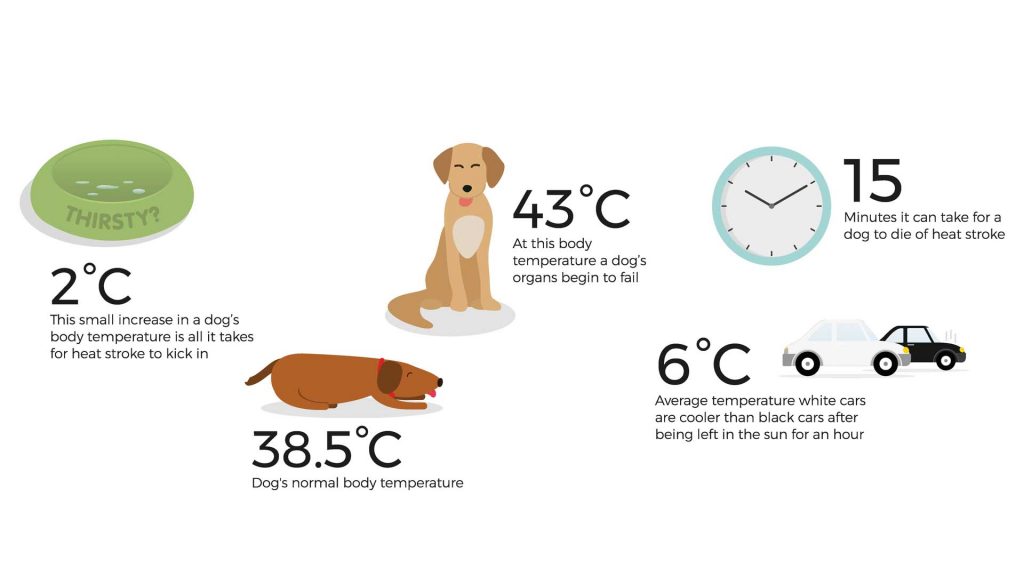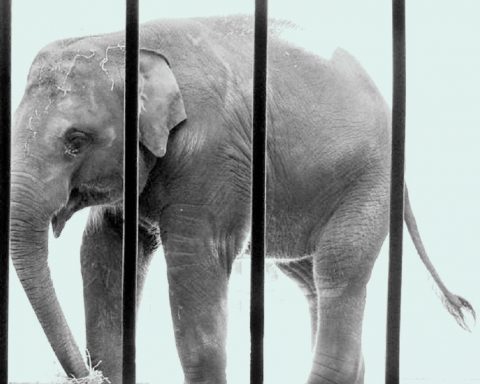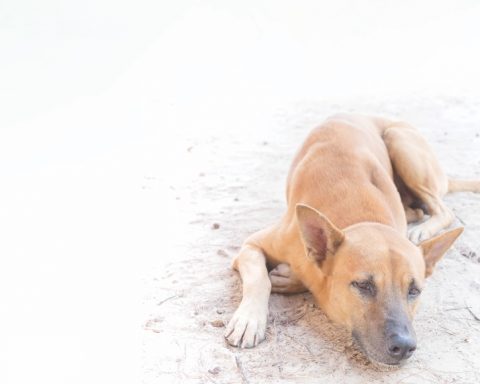Upper airway constriction & death
For the first time in all of my 30 years of practice I have had several direct heat related deaths in one summer. I just want to reiterate this point as there is nothing more distressing and excruciating for an animal to die in this way and if this article reaches one person then it will be worth it.
In one of the incidents it involved a dog being exercised in the middle of the day. A healthy young male that was over-exercised in the midday sun. Dogs cannot sweat like we do to drop their body temperature; they are covered in a thick coat and their ability to thermo-regulate is far inferior to ours. The pet dog is descended from the wolf, which are found in cold regions and have a thick coat to protect them from the cold, so not an ideal scenario for those living in hot climates. Their main means to drop body temperature is by panting and they also have some sweat glands on their paws.
In the hot weather we have been having this summer with temperatures regularly in the high 30s our dogs are particularly susceptible to heat stroke. When the body temperature rises to an excess level the body starts to ‘cook’ from the inside. If the internal body temperature is sustained for a prolonged period of time then the organs are irreversibly damaged, as all the proteins and enzymes are denatured. The vet’s primary objective when confronted with such a clinical case is to try and drop the core temperature as rapidly as possible before the condition is irreversible. Cold external compresses, internal cold water enemas and cold intravenous fluid infusions are the only tools available to do this. If by accident your pet overheats hose it down or dump it immediately in a cold bath , or the sea; if caught early enough there will be no need for enemas etc.
The other scenario where your pet can die from heat without having heat stroke is when there is narrowing of the upper airway, the latter is particularly prevalent in the brachycephalic breeds; those animals with very short muzzles. As previously mentioned a primary way a dog drops its body temperature is by panting. Brachycephalic breeds have narrow airways, so when they pant there is more stress in the upper airways. This can lead to further narrowing of the airways; tracheal collapse, soft palate entrapment etc. This will lead to inspiratory stridor (difficulty breathing in), and can potentially have catastrophic effects on the circulatory system and the lack of oxygen can lead to the dog asphyxiating. If you have one of these breeds keep a very close eye on the colour of your pet’s tongue. If it is slightly cyanotic, bluish and not a normal pink colour, then get it quickly to a cooler place; an air-conditioned room is ideal but a fan will work well. The main aim is to make the animal cooler so that it stops panting.
I personally have never seen a cat with heat stroke, this is for several reasons. The main reason behind this is that cats are cleverer than dogs, if they feel the heat they will seek a cooler environment but a dog will happily carry on chasing a ball! Secondly domestic cats are descended from desert cats whose physiology is more geared up to live in hot climates, also are smaller and therefore it is easier to thermo-regulate too as a result of their surface area to weight ratio.
We are blessed to be living in the climate that we do but just because we enjoy the heat doesn’t mean it is safe for our pets. Use your common sense and if any doubt then always err on the side of caution and leave your pet at home.
For more information please phone Gibraltar
Vetinary Clinic on 200 77334

